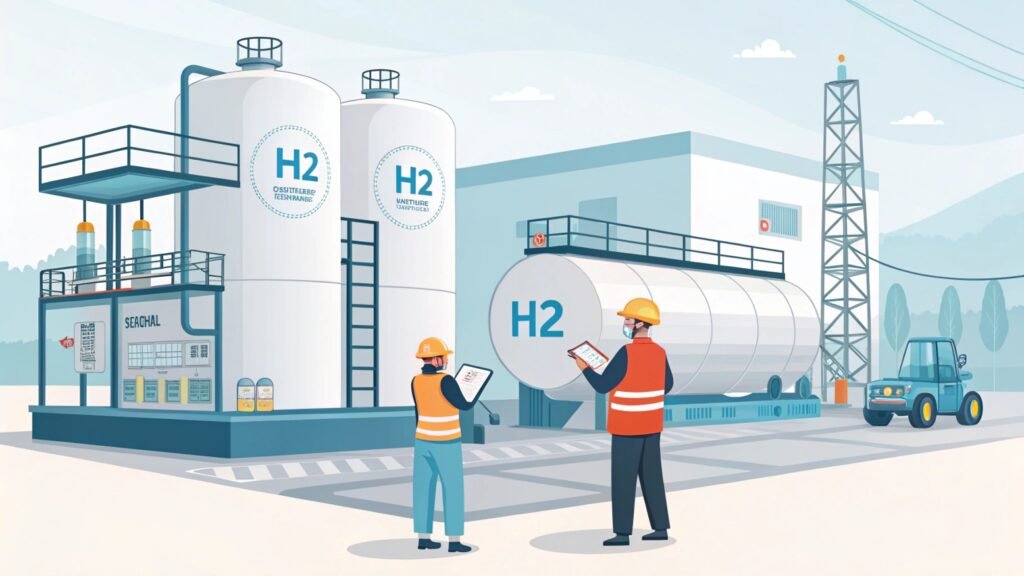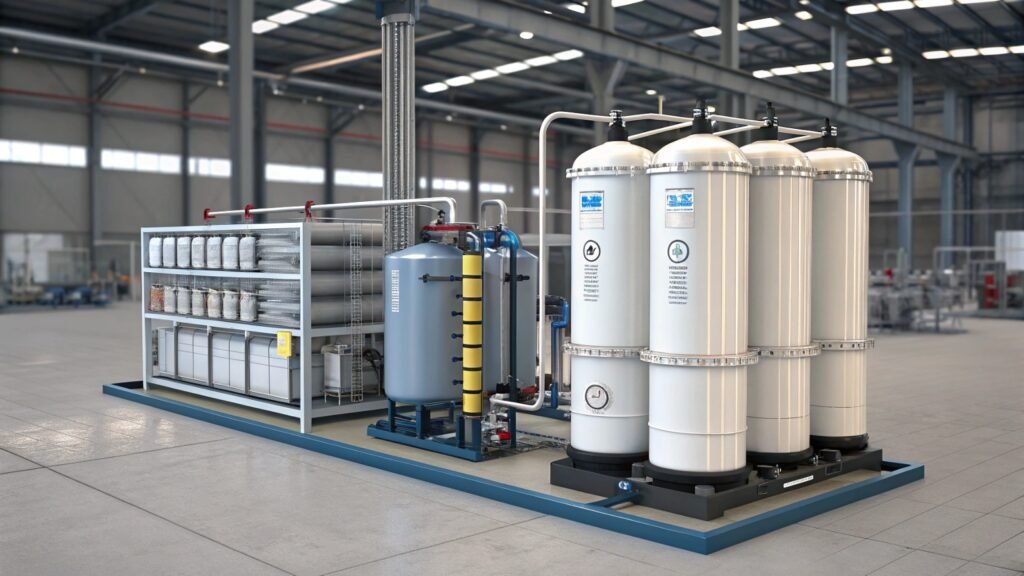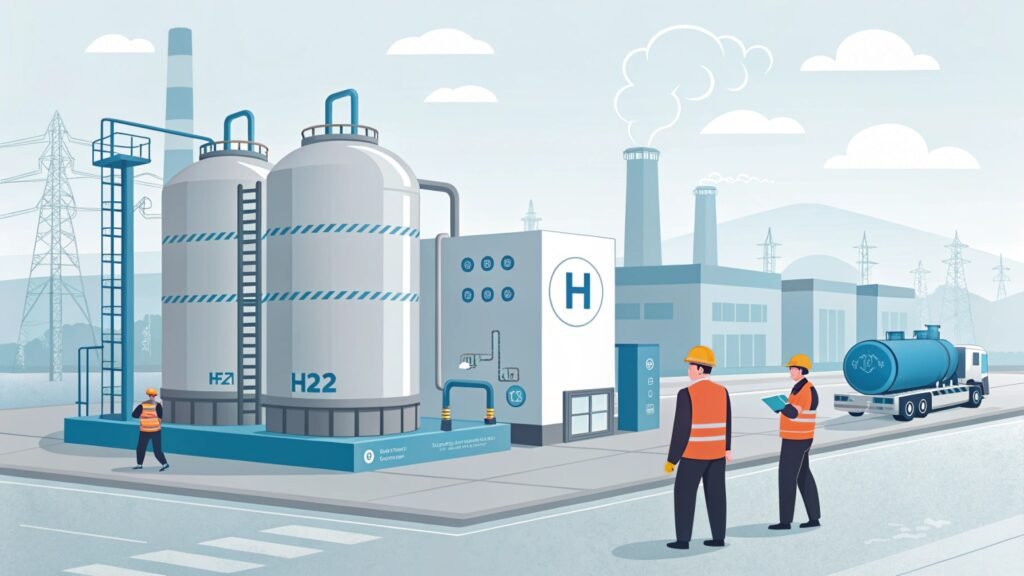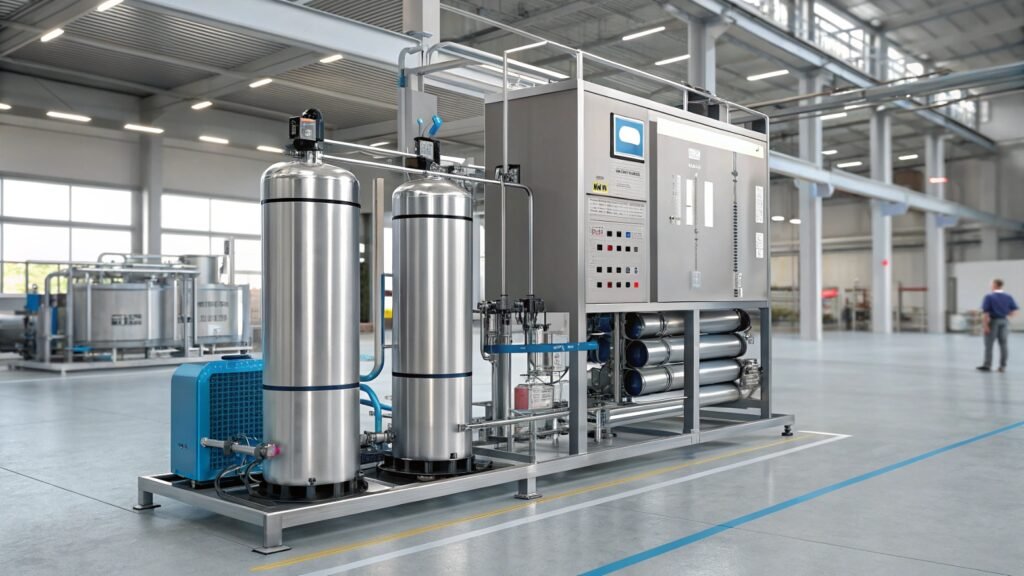I notice confusion about picking the right hydrogen drying agent. This often leads to wasted resources and poor dryness. Let’s fix that problem with a simple approach.
Molecular sieves, like 4A, are often the top choice for hydrogen drying. They remove moisture to a very low level and handle wide flow rates. Silica gel, calcium chloride, and phosphorus pentoxide are other common options, but each has different levels of dryness, cost, and handling safety.
I want to share more about each option. I also want to show how you can choose the best agent for your system. Let’s keep going.
What is the appropriate drying agent of hydrogen gas?
I find many novices wondering about hydrogen drying. They worry about safety and dryness. I will show a simple way to pick the most fitting drying agent.
Molecular sieves are often preferred because they achieve very low moisture levels. They are also stable under many conditions. Calcium chloride is a cheaper option, but it offers lower dryness. Silica gel is reliable but not for extreme dryness. Safety and cost both matter.
Selecting the Right Agent
When I pick a drying agent for hydrogen, I look at moisture level requirements, cost, and safety. I also consider the flow rates, operating temperatures, and possible contaminants. Each drying agent has a unique set of properties, and it is important to align these features with the process demands.
Key Properties
Molecular sieves can deliver very low dew points and withstand frequent regeneration. Calcium chloride is cheap, but it can cake and lose efficiency if it dissolves in absorbed water. Silica gel works well at moderate moisture conditions and is easy to handle. Phosphorus pentoxide offers strong desiccation but is more reactive. Magnesium perchlorate is also effective, yet it needs careful handling due to its oxidizing nature.
Typical Uses
I see molecular sieves used in electrolytic hydrogen production. Many industrial plants opt for them when they need continuous dryness and stable performance. Calcium chloride finds use in simpler setups that do not demand extreme dryness. Silica gel appears in labs that need moderate moisture control. Phosphorus pentoxide is suited for small-scale tasks where ultra-dry conditions matter, like certain instrumentation processes.
Safety Aspects
I never overlook safety. Phosphorus pentoxide is corrosive, and I must store it properly. Magnesium perchlorate is a strong oxidizer, so it needs caution around organics. Calcium chloride might corrode some metals. Molecular sieves are often safer, though I still check for dust inhalation risks.
Here is a simplified table of different agents:
| Drying Agent | Dryness Level | Handling | Notable Point |
|---|---|---|---|
| Molecular Sieves (4A) | Very Low | Generally Safe | Best all-around option for deep dryness |
| Calcium Chloride (CaCl₂) | Moderate | Can cake over time | Economical but less drying capacity |
| Silica Gel | Moderate | Easy to handle | Good for moderate moisture removal |
| Phosphorus Pentoxide (P₂O₅) | Very Low | Corrosive, reactive | Extremely strong but tricky to manage |
| Magnesium Perchlorate (Mg(ClO₄)₂) | Very Low | Oxidizer | Strong desiccant but must handle with care |
I always weigh cost and performance. Some agents are cheap but do not reach the required dryness. Others deliver extremely low moisture yet come with safety or cost concerns. In electrolytic hydrogen production, I lean toward 4A molecular sieves because they handle large volumes and give consistent dryness. That is why they are very popular across various industries. This balance of high dryness, cost-effectiveness, and manageable safety risk makes them a wise choice in many scenarios. Yet, if I only need moderate dryness and have lower safety constraints, calcium chloride can be a strong candidate. If I require ultra-dry conditions, I might pick phosphorus pentoxide or magnesium perchlorate, but I then plan for additional safety measures. My choice depends on the dryness needed, the cost I can manage, and how comfortable I am with handling hazards.
Which is suitable solid used for drying hydrogen gas?
I often speak with colleagues about which solid works best. They worry about efficiency and how to maintain dryness. Let me share a simple comparison.
Silica gel has decent drying power at moderate levels and is easy to handle. Molecular sieves, on the other hand, excel at deeper moisture removal. Calcium chloride is cheap but can liquefy when it absorbs water. Safety and dryness demands guide the final pick.
Fitting the Solid to the Process
I think of many factors when I pick a solid drying agent for hydrogen. The first factor is the dryness level I want. The second factor is how stable the agent remains under process conditions. The third factor is the cost and availability of that agent in the market. If the design needs a continuous flow of hydrogen and a consistent dew point, I lean toward robust materials like molecular sieves. If the process is more flexible, and I only need moderate moisture removal, then simpler materials can be enough.
Comparing Dryness Targets
I work with different dryness targets. Some processes need dew points well below -70 °C. In those cases, I use molecular sieves or magnesium perchlorate. If my process only needs moderate dryness, say around -40 °C dew point, silica gel or calcium chloride might be fine. If trace moisture can ruin the product, I pick a more powerful desiccant and set up a strict operating procedure.
Operating Conditions
I always check the process temperature. Molecular sieves keep their efficiency over a wide temperature range. Calcium chloride can degrade if it sees too much heat or water. Silica gel can also lose capacity at higher temperatures but is easy to regenerate at moderate heat. This matters a lot when I design a dryer unit. I also see that some systems use two or more drying agents in layers. For example, a bed of silica gel might catch bulk moisture, and molecular sieves might fine-tune dryness. This layered approach can extend the life of each agent.
Maintenance Requirements
I find that some materials need frequent regeneration or replacement. Calcium chloride is not always reusable, so I might have to refill it. Molecular sieves are often regenerated by heating or purging. Silica gel also can be regenerated, but eventually, it may degrade over time. I factor in ongoing maintenance costs. My experience shows me that cheap materials might be easy on the budget at first, but they can cost more in the long run if I replace them often.
In summary, I believe the solid you pick should match your dryness target, safety constraints, and budget. Sometimes I see people choose a cheaper agent and then face problems with moisture breakthroughs. Other times they invest in molecular sieves and never worry about water content again. It all depends on the dryness demands of the system and the safety rules in the facility.
What is the drying agent of hydrogen gas?
I get asked this question by new staff. They see many options and fear choosing wrongly. I will lay out my approach in plain steps.
Molecular sieves, specifically 3A or 4A, deliver excellent performance. They handle frequent regeneration and bring the dew point very low. I look at other options if cost or reactivity are factors.
Balancing Efficiency, Safety, and Cost
Every time I pick a hydrogen drying agent, I try to balance three key points: efficiency, safety, and cost. Each factor influences the final selection. I also look at the big picture, from design to daily operations. I believe it is not just about dryness, but also about how well the entire process flows.
Efficiency in Moisture Removal
I measure efficiency by how low the agent can push the dew point and how fast it absorbs water. Molecular sieves are a solid bet if I need dryness near or below -70 °C. They can handle large volumes of hydrogen, and regeneration is straightforward. Calcium chloride might only reach about -40 °C dew point, but it is cheaper upfront. Sometimes that is enough. Phosphorus pentoxide or magnesium perchlorate can reach very low dew points, though they pose extra hazards.
Safety Considerations
I treat safety as crucial. Phosphorus pentoxide is corrosive, so I need special containers and equipment. Magnesium perchlorate can be a fire hazard if mishandled. Calcium chloride might corrode metals over time. Even molecular sieves produce dust if not handled gently. I ensure that my staff receives training for each desiccant. Gloves, masks, and proper ventilation often solve these worries. I never compromise on safety. It can save me a lot of trouble later.
Cost Calculations
Cost is not only the purchase price. It also includes disposal, regeneration, and downtime. Phosphorus pentoxide and magnesium perchlorate might drive up disposal costs. Calcium chloride might seem cheap, but frequent replacements add up. Molecular sieves can be reused many times, but the initial price is higher. I calculate total cost over the life of the dryer. If molecular sieves last years with minimal replacement, that might be the best value. If I only need a quick fix, calcium chloride might do. I always look at the life-cycle cost, not just the purchase cost.
When I connect these points, I see that the best agent depends on the dryness goal, how much downtime I can tolerate, and how important safety is for my facility. Industrial hydrogen production often calls for molecular sieves due to their strong combination of dryness capacity, ease of regeneration, and long service life. That is why I recommend them in many cases. If someone has a tight budget and the dryness needs are not strict, I might suggest calcium chloride. For extremely dry conditions, I keep phosphorus pentoxide or magnesium perchlorate on my list, but I also emphasize handling precautions. That is how I balance efficiency, safety, and cost.
Conclusion
I have shown different drying agents for hydrogen, their pros, and their trade-offs. Always match dryness, cost, and safety for the best outcome.






